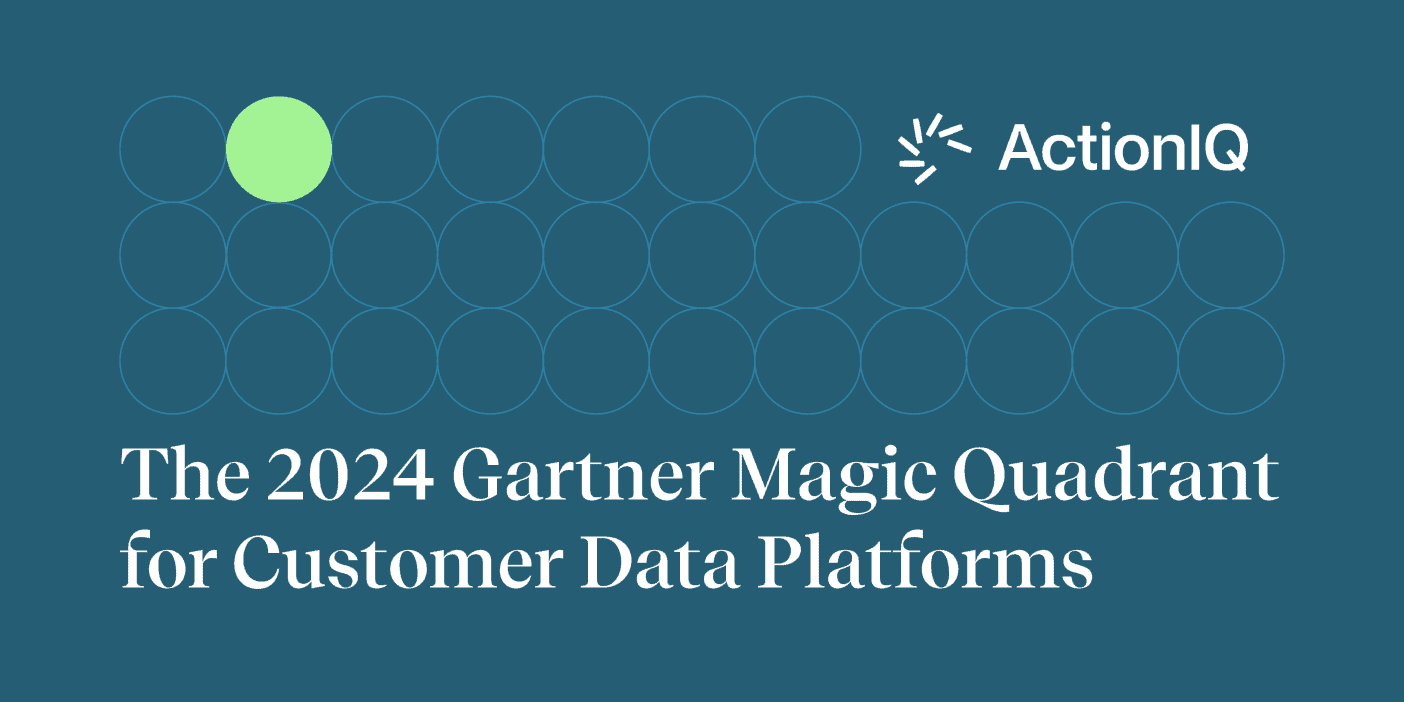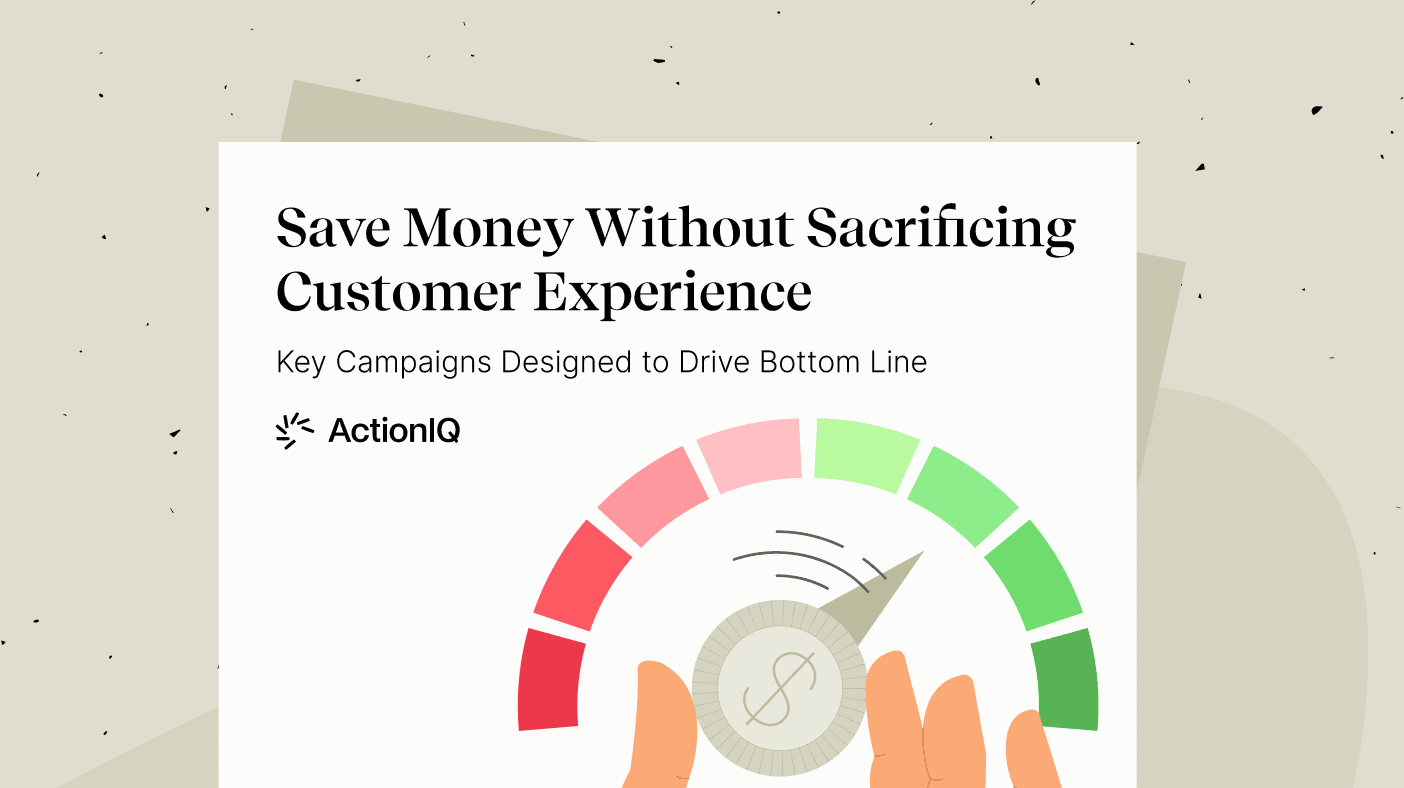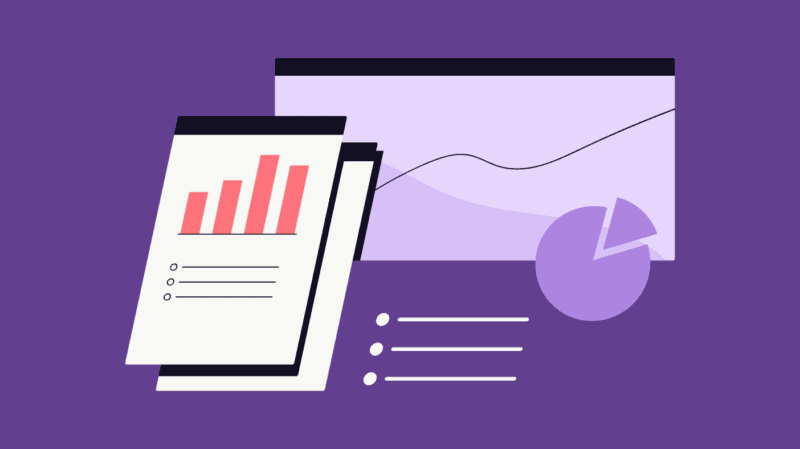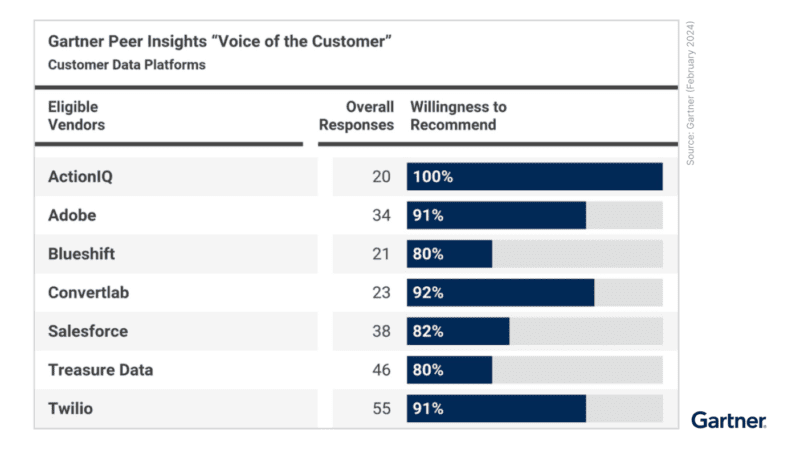Discover the New 2024 Gartner Magic Quadrant CDP Report

Are you evaluating customer data platforms (CDPs) for your organization? The Gartner® Magic Quadrant™ CDP report provides critical insights into top vendors, differentiating leaders from niche players in the market. This article offers a clear, concise analysis of the 2024 report, steering you through the complexities of choosing the right CDP vendor based on Gartner’s meticulous research.
Gartner Magic Quadrant CDP Report: Key Takeaways
- The Gartner Magic Quadrant for Customer Data Platforms (CDPs) is a leading research tool that categorizes vendors into four segments (Leaders, Challengers, Visionaries, and Niche Players) and helps businesses understand the competitive landscape to make informed decisions.
- The CDP market is experiencing significant growth with major enterprise software providers expanding their offerings and businesses increasingly recognizing the ROI benefits of CDPs, underlining the importance of data quality in implementation.
- Selecting the right CDP involves assessing organizational needs and goals, understanding the available CDP types and vendors, and planning for smooth implementation, including preparing data infrastructure and assembling cross-functional teams.
Understanding the Gartner Magic Quadrant and Its Relevance to CDPs

The Gartner Magic Quadrant, an analytical tool designed to evaluate and rank companies within a specific market or industry, has become instrumental in navigating the rapidly growing CDP market. But it’s important to note exactly what’s behind the Gartner Magic Quadrant and why it’s so important for CDPs.
What is the Gartner Magic Quadrant?
The Gartner Magic Quadrant is more than just a graphical depiction of vendor performance in a specific market; it provides a comprehensive comparative analysis of technology and service providers based on their completeness of vision and ability to execute. This detailed evaluation is derived from a highly structured methodology that assesses vendors on 15 weighted criteria, providing a comprehensive view of the market landscape.
Vendors are categorized into four quadrants: Leaders, Challengers, Visionaries, and Niche Players, reflecting their market positioning and strategic direction. The research process involves identifying the market, setting inclusion criteria for vendors, and rating them based on defined criteria. This systematic approach provides a clear roadmap for businesses looking to understand the competitive landscape of their industry.
Why is the Magic Quadrant significant for CDPs?
Within the rapidly growing CDP market, the Magic Quadrant is vital for potential buyers as it aids in the pruning down of vendor options through thorough evaluations and analysis. Organizations can utilize the Magic Quadrant to understand vendor strengths and potential risks, thereby enhancing decision-making for their current and prospective CDP requirements.
With Gartner’s projection of the CDP industry growing to over $5.5 billion by 2028, the Magic Quadrant becomes a critical tool for businesses navigating this expanding market. However, as useful as the Magic Quadrant is, Gartner cautions users to consider it as one of several tools in the vendor selection process, not as the sole deciding factor.
How does Gartner define CDPs?
Gartner defines CDPs as “software applications that support marketing and customer experience use cases by unifying a company’s customer data from marketing and other channels. CDPs optimize the timing and targeting of messages, offers and customer engagement activities, and enable the analysis of individual-level customer behavior over time.”
Current State of CDPs in Gartner Research

Research materials from Gartner provide pivotal insights into the current state of the CDP market. The recently released new Magic Quadrant for CDPs serves as a valuable resource, offering prevalent trends and vendor evaluations to navigate your CDP selection process.
Gartner Market Guide for Customer Data Platforms
The Gartner Market Guide for Customer Data Platforms highlights a growing demand for CDP technology, including the customer data platform. Major enterprise software providers are expanding their CDP offerings, reflecting this trend. Businesses, too, are recognizing the need to invest in CDPs due to the significant return on investment and benefits they offer.
Aside from spotlighting demand, the Guide also emphasizes the role of data quality in the successful implementation of a CDP. Especially in sectors like financial services, marketers are prioritizing this aspect. Moreover, it’s key to comprehend an organization’s customer data maturity to identify the required functionality level from a CDP.
Gartner Peer Insights: CDP Vendor Reviews
Gartner’s Peer Insights platform is a valuable resource in the evaluation process. This peer-driven ratings and reviews platform encompasses over 300+ technology markets and 3,000 vendors, allowing users to browse, read customer reviews, and compare different CDP vendors.
Peer Insights facilitates the process of evaluating CDP vendors by providing a platform for users to share their experiences. These insights can significantly assist potential buyers in making informed decisions, providing a comprehensive understanding of the vendor landscape. ActionIQ is currently the highest-rated CDP on Gartner Peer Insights, with a 4.9 out of 5.0 rating.
Selecting the Right CDP for Your Business Needs
Choosing the appropriate CDP for your business is a pivotal decision encompassing many factors. It’s imperative to consider all aspects – from assessing organizational needs and goals to evaluating CDP types and vendors – to ensure the chosen CDP aligns with your business objectives.
Assessing Organizational Needs and Goals
The first step in selecting a CDP involves a thorough assessment of your organization’s needs and goals. This process includes defining a customer data strategy and outlining core challenges specific to your brand. Focusing on a few key scenarios when identifying use cases can ensure the CDP aligns well with your company’s objectives.
Understanding the business value behind having a CDP guides the selection process and helps set realistic expectations for its contribution to the organization. Furthermore, it’s crucial to ensure that customer data management processes are in place prior to CDP implementation, considering aspects like data governance, quality enforcement, and data storage for the customer data platform – whether it’s composable, bundled or marketing cloud.
Evaluating CDP Types and Vendors
Evaluating different CDP type options and vendors is a crucial step in the selection process.
CDPs offer different features and pricing strategies. For example, A CDP’s capability to integrate effectively can significantly impact ROI. Therefore, it’s important to list the tools that need to connect to the CDP to evaluate vendor integrations effectively. Pricing models for CDPs vary, typically following a subscription model based on the number of profiles tracked. This underscores the importance of assessing ROI when choosing a CDP.
Real-World Examples of Successful CDP Implementations

To comprehend the potential advantages of integrating a CDP into business processes, let’s examine some real-world instances of successful CDP implementations. Companies like Atlassian and Saks have leveraged CDPs to their advantage, demonstrating the transformative potential of these platforms.
CDP Case Study 1: How Atlassian Uses ActionIQ’s Complete Composable CDP
With 10 terabytes of data and 288 million customers, Atlassian needed a way to harness information swiftly, securely and seamlessly, but there was a gap between their data goldmine and their marketing team’s activation. This led to a customer data platform.
With a customer data strategy that saves time and dollars with the flexibility to grow with the business — the Atlassian team can optimize their resources where it matters and reach a new level of efficiency to power growth, achieving 71% increase in customer conversions with ActionIQ audiences over control. Through granular segmentation of first-party data, they elevated their customer acquisition game, achieving a 5X increase in reach, a 6.7% saving in paid media costs and 50% reduction in RoAS.
Case Study 2: How Saks Uses ActionIQ’s Complete Composable CDP
For leading luxury brand Saks, data is incredibly powerful. It empowers team members across the organization to make decisions that are always smarter and better, through both success and failure. But in order to unlock that data-driven strategy, you need a CDP to democratize and activate that data-driven decisioning and action — from the analytics team all the way to the marketers and beyond.
Saks’s data is all in Snowflake, where it’s managed by Nivy Swaminathan, Vice President of Advanced Analytics and Personalization and her team. They build data science models, predicting outcomes at a user level, and all of that rich data gets written back into their Snowflake data system. ActionIQ mirrors that work to allow marketers access and activation of all of those insights-driven audiences. With ActionIQ, Saks activates audiences in 10 channels (and growing) through integrations, with first-party data as a signal to activate on different platforms.
This user-friendly approach proved to be successful for Saks, providing them with improved access to their marketing.
Tips for Ensuring a Smooth CDP Implementation

Despite the multitude of benefits offered by CDPs, their successful deployment necessitates planning and coordination. In this segment, we’ll delve into suggestions to ensure a seamless CDP deployment, with a primary focus on the preparation of data infrastructure and the establishment of cross-functional teams.
Preparing Your Data Infrastructure
The first step in implementing a CDP involves preparing your data infrastructure – and this will look different based on the kind of CDP you implement. Establishing a scalable customer data infrastructure is crucial to prevent a ‘data swamp’ and to support marketing technology stacks. A solid data foundation allows for the efficient collection and storage of partner data, ensuring high-quality data for your CDP.
Data segmentation is an essential step in this process, requiring the mapping of customer profiles and the identification of different data sources such as POS and CRM systems. Also, ensuring the CDP can integrate with existing and potential customer data activation systems is necessary to maintain a robust data technology stack.
There are three primary types of Customer Data Platform – Bundled, Composable and Marketing Cloud. Each will benefit organizations in different ways. A Bundled CDP is a traditional all-in-one solution defined by industry analyst CDP Institute as “packaged software that creates a persistent, unified customer database that is accessible to other systems.”
These solutions combine infrastructure capabilities with business applications and aim to provide an end-to-end solution for collecting, unifying, segmenting, orchestrating and activating customer data.
A Composable CDP enables a zero-copy architecture with capabilities to eliminate local storage of data copies. The warehouse-agnostic approach offers flexibility so that teams can select their preferred cloud infrastructure while providing business teams with an advanced no-code interface – ActionIQ offers hybrid functionality to serve both needs and activate data from wherever it is stored.

Building Cross-Functional Teams
Building cross-functional teams is another critical aspect of a successful CDP implementation. Assembling a team comprising professionals from:
- IT
- Marketing
- Sales
- Other departments
is crucial for effective coordination and strategy formulation.
Creating a Data Center of Excellence (DCOE) can bring together business, analytics, and IT teams, using clear processes, ownership, and communication rules. Also, adopting technology that supports and enhances the capabilities of people and processes is vital for maximizing the scale and impact of cross-functional efforts.
Gartner Magic Quadrant CDP Report: Summary
In conclusion, the selection of a CDP is a crucial decision that can significantly impact a business’s marketing strategies and customer engagement. Tools like the Gartner Magic Quadrant, along with careful assessment of organizational needs and vendor evaluation, can guide businesses in making an informed decision. Real-world examples demonstrate the transformative potential of CDPs when implemented strategically. However, successful implementation requires careful planning, including preparing data infrastructure and building cross-functional teams.
Gartner Magic Quadrant CDP Report: Frequently Asked Questions
What is CDP Gartner?
CDP Gartner is a marketing technology that unifies customer data from various channels to optimize message targeting and timing, as defined by Gartner.
What is the difference between a CRM and a CDP?
The main difference between a CRM and a CDP is that a CRM primarily functions as an operational tool for sales management, while a CDP serves as a centralized data analytics engine for multiple consumer-facing teams. Using a CRM, you can manage sales performance and track purchase history, while a CDP centralizes data from internal and external sources for analysis.
What is the difference between a DMP and a CDP?
The main difference between a DMP and a CDP lies in their focus on data sources and marketing aspects. DMPs are designed for ad targeting using third-party data, while CDPs utilize all data sources, including first-party data, and focus on all marketing aspects.
What is a data platform for Gartner?
Gartner defines a data platform as a set of integrated technology capabilities that enable governance across all information, data, and analytics assets. It serves as a foundation for managing and utilizing an organization’s data effectively.
What is the Gartner Magic Quadrant and why is it important for CDPs?
The Gartner Magic Quadrant is essential for CDPs because it helps potential buyers evaluate and compare different vendors based on their strengths and potential risks, aiding in informed decision-making.





